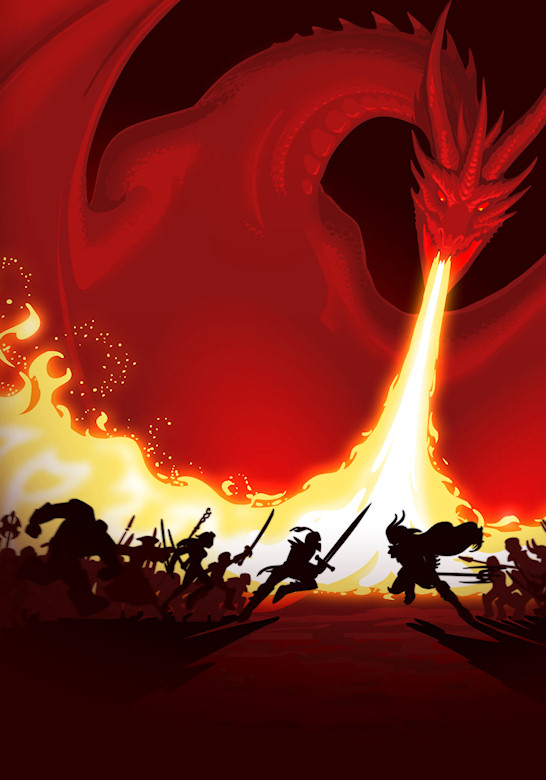Dragon Age Legends Review
-
Category: ReviewsHits: 22384

Article Index
Page 1 of 2
IntroductionDragon Age Legends (DAL) is a free-to-play Facebook / Google+ game being developed by BioWare San Francisco (formerly known as EA2D). It's a tactical strategy game with role-playing elements, and it's similar in many ways to games like Disciples, King's Bounty, and Heroes of Might and Magic (or Might and Magic Heroes, take your pick), where you combine turn-based combat with castle management and a hero character that you develop.
DAL made its debut on Facebook last November (and Google+ in August), and while it didn't start out with a lot of content, it has continued to expand and improve since that time, and it's now in pretty good shape. I started playing DAL in March (when I learned that I could unlock some items in Dragon Age II by playing it for a few levels), and even though I don't always have a lot of free time, I've stayed with it and enjoyed it.
Characters
Since DAL is a Facebook / Google+ game, you're only allowed to control one character per account, and that character can be a mage, a rogue, or a warrior. Those are the same three classes as in the other Dragon Age games, but after that everything else about character development is different. For example, instead of using the six attributes from the Dragon Age games, DAL uses attack (how much damage you do), defense (how well you defend), stamina (how much health you have), agility (how often you dodge and get a turn in combat), and luck (how often you hit and score a critical hit).
The skills available to the classes are also different. DAL is completely a combat game, so there aren't any skills for springing traps or influencing people. Instead, each class gets about 30 skills to help them damage or disable their opponents. These skills are roughly divided so that each class can specialize in multiple ways. For example, warriors can focus on weapon-and-shield combat versus two-handed weapon combat, and thrown weapon combat versus melee weapon combat.
Each time your character gains a level in the game, you get a point to add to an attribute and a point to add to a skill. Currently, skills have a maximum rank of 10 and characters can reach level 50, so even if you play to the level cap you can't learn everything, which is good. If you decide that you don't like your build then you can re-spec your character for some gold, but if you don't like your class then you have to start over to change it.
I've been playing a bow rogue in DAL. Bow rogues are one of the weaker classes in the game (BioWare still has some work to do to balance out the classes), but they get some fun skills including Throw Voice (enemies attack the targeted enemy), Rapid Shot (the rogue gets an extra attack), Pinning Shot (the targeted enemy is disabled), and Mass Volley (all enemies are attacked for three rounds after a delay). Most skills require mana, which can only be supplanted by using potions (or via the Steal Mana skill of mages).
Exploring and Questing
Gameplay in DAL comes in four flavors: questing and map exploration, castle management, guild versus guild combat, and raids. I'll start with questing and map exploration, since that is the largest part of the game.
DAL's world is made up of several maps (including Kirkwall and Orzammar), each of which is filled with a series of connected nodes. Nodes usually generate battles, but sometimes they also give you a prize, including one crown node per map (crowns are the special DAL currency that you mostly have to spend real money on to receive). If you haven't visited a node yet, then it costs you energy to move to it, with a higher energy cost meaning a tougher fight or a better prize. Energy replenishes over time.
When you visit a battle node, you're prompted to select two of your companions (which can be default NPCs or any of your friends who also play the game) and place them on the battlefield. Battle placement is straightforward. Each side gets two columns of three rows each, where your melee characters can only attack the column closest to them, and ranged characters can attack anybody. Movement after combat starts is not allowed. This is roughly the same system as in Disciples II.
Once you've placed your characters, combat then proceeds in rounds, and the upcoming order of characters is clearly shown in the interface. During each round, a character can use a skill or a regular attack, and also use a bomb or a potion. Potions mostly just heal or restore mana, but bombs can be more versatile. For example, there are Frost Bombs that disable enemies and Acid Bombs that lower the defense of all enemies. Most battles I fight start with an Acid Bomb.
In a nod to Dragon Age II, battles include waves of enemies. As soon as you've completed one wave, you move on to the next, with the character who finished the current wave getting to strike first in the new wave. That means your three characters often have to fight 20-30 enemies per battle, and it means you have to be careful, because any companions who get knocked unconscious are lost for the remainder of the battle, and if your character gets knocked unconscious, then you automatically lose the battle (unless you have smelling salts, and then you can restore your character to full health).


